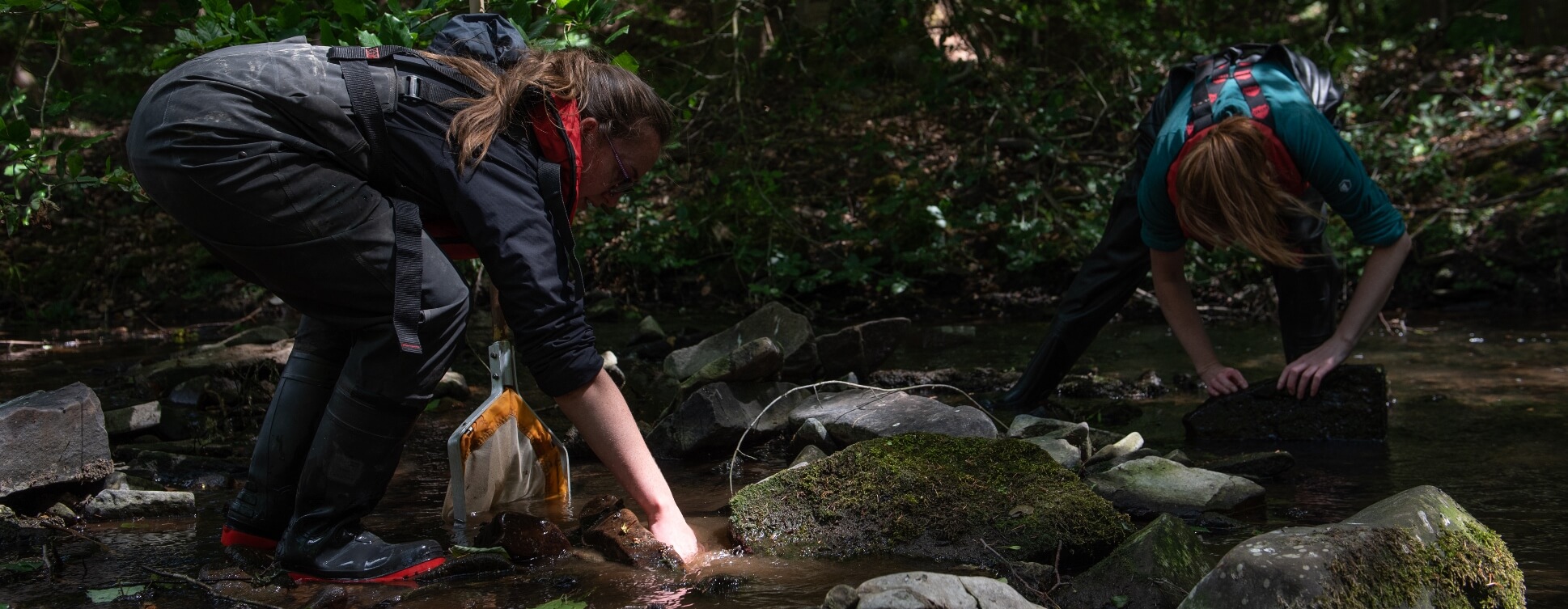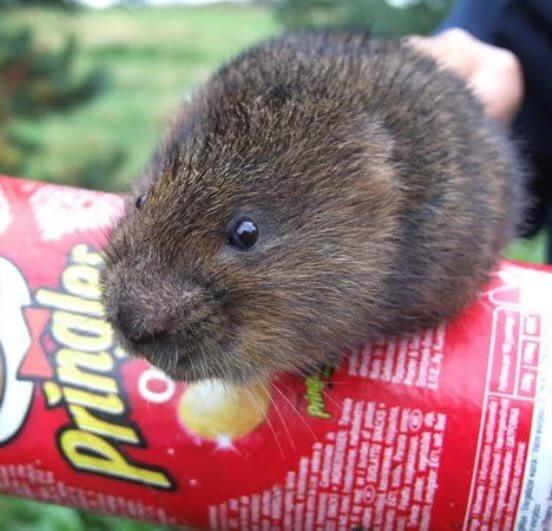

Our experienced team of ecologists undertake surveys for water vole, otter and crayfish predominantly throughout Derbyshire, Nottinghamshire and Leicestershire, but are also able to travel further across England.
The water vole breeding season runs from April to September during which time water vole surveys are usually undertaken. During their breeding season water voles are extremely active and leave signs, such as latrines (piles of droppings) and feeding remains (short sections of cut plant material), which can be used to confirm their presence.
Water voles receive legal protection under the Wildlife and Countryside Act 1981 (as amended). This legislation protects against deliberate killing or injuring and sale, as well as intentional damage, destruction or obstruction of the access to any structure or place which water voles use for shelter or protection or disturbance to water voles while they are using such a place.
The legislation makes it important that any works with may directly impact a watercourse or waterbody, or where works are proposed in close proximity are preceded by a water vole survey. The water vole survey will determine presence or presumed absence and allow for mitigation measures to be designed into the scheme.

The habitat’s suitability to support water vole is assessed during an initial survey such as a Preliminary Ecological Appraisal. The assessment includes identifying potential foraging resources, as well as the suitability of the watercourse’s banks for the digging of burrows. The banks are also assessed as to whether they support enough vegetative cover to provide shelter. Water vole habitat assessments can be undertaken throughout the year, however where habitats are assessed as providing potential for water voles, a full survey would be required during the water vole breeding season.
A water vole survey involves a search of the banks of the watercourse for evidence of water vole, including burrows, latrines, footprints, runs in the vegetation, grazed 'lawns', feeding remains and actual sightings. Water vole surveys should be undertaken between April and September (they can continue into October in warmer years), and presumed absence can only be confirmed by undertaking two survey visits (spread throughout the optimal water vole survey period).
Otters occur throughout the United Kingdom in and around their main habitats of streams, rivers, lakes, wetlands and coastal areas. Otters have very large home ranges (over tens of kilometres along rivers) and predominantly feed on fish but will also consume crayfish and occasionally take water birds.
The UK otter population suffered a significant reduction in numbers during the middle of the 20th Century, which was primarily acknowledged to be as a result of pollution and habitat loss. However, legislation to protect otters and also legislation to prevent certain chemical pesticides and fertilisers entering watercourse, has resulted in the recovery of otter throughout the UK.
The otter is a European Protected Species and therefore otters and their breeding sites and resting places are protected under the Wildlife and Countryside Act 1981 (as amended).
Otter surveys can be undertaken throughout the year. A survey for otters comprises of ecologists searching banks of the watercourse for otter footprints and their spraints (droppings). Otters spraints contain mainly fish scales and bones, are dark in colour and have a distinctive smell. Otter spraints are typically found on rocks or logs close to the water’s edge and are also often found below bridges and other structures crossing over rivers.
An otter survey also looks to identify potential laying-up areas, otter holts (these are the places otter use for rest and shelter) and habitat considered suitable for otters.
If proposed works may impact on otters or their habitats, works can usually only proceed under a licence from Natural England. Compensation habitat may be required, which could include the construction of an artificial holt.

The white-clawed crayfish is our only native species of crayfish, however it has seen a significant decline in population in recent times, primarily due to the presence of non-native crayfish species, in particular the signal crayfish (native to North America) which can carry crayfish plague.
As a result of the population declines the white-clawed crayfish is listed on Schedule 5 of the Wildlife and Countryside Act 1981 (as amended) and is also included in Appendix III of the Bern Convention and Annexes II and V of the European Habitats and Species Directive. It is also a Priority Species under the UK Post-2010 Biodiversity Framework.
White-clawed crayfish surveys can only be carried out by licenced surveyors between mid-July and mid-September.
The standard method for white-clawed crayfish surveys involves hand searching potential refuges (such as rocks and boulders with a stream or riverbed) and using a hand net at sample locations.
Baited crayfish traps can also be used to survey for white-clawed crayfish. Traps are set in the evening and then collected the following morning. Any white-clawed crayfish which are caught are measured and inspected before being released. The use of crayfish traps requires consent from the Environment Agency.
A licence from Natural England is required if the proposed works may impact on white-clawed crayfish and therefore crayfish need to be translocated to safety prior to works commencing. Mitigation required usually involves having an ecologist present on site prior to works to translocate any crayfish to a receptor site. A receptor site may need to be enhanced by the addition of large stones and refuges within the watercourse in order to be suitable for crayfish.